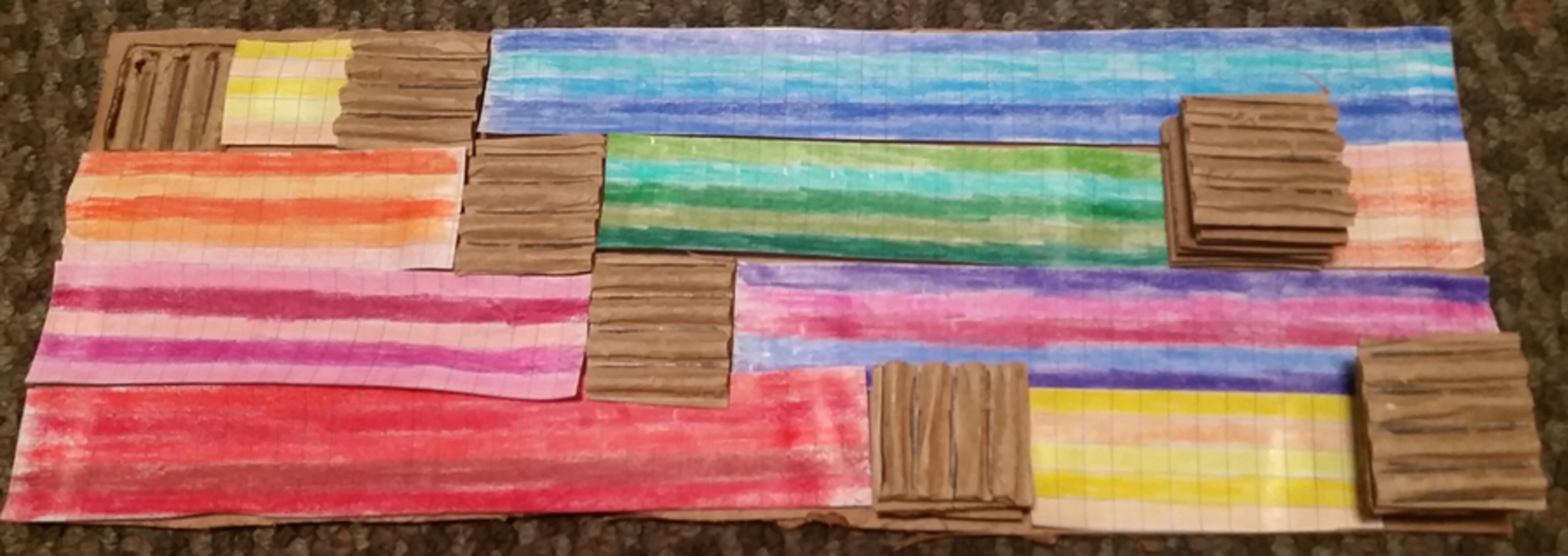Intention
I thought of my project through my most prominent application of music: my ukulele. I began by thinking: how could I translate a song into something tangible. And the first thing I could think of was the ukulele chords chart in my head. A chord chart tells you where to put your fingers on the strings of a string instrument to produce a chord. This was my starting point.
Once I had this, I thought of simplifying the chord into a grid. I sketched out some chords on graph paper and filled in the squares of the grid that corresponded to a fret and string (ultimately telling you how to play the chord). Once I had this idea in my head, I chose a song to work with. I chose "Somewhere over the Rainbow" by Isreal Kamakawiwo'ole (a ukulele player known by almost all other players). I chose this song because it is probably the first song any amateur learns on the ukulele, myself included. The chords for this song are C, Em, Am, and F. I sketched out the chords on my newly found grid interpretation and then cut them out of cardboard, layering the cardboard squares to build a 3D musical representation.
After my basis of the chords were built, I wasn't quite satisfied with how dull and boring my project was, especially given the song I was working with. What did I do to fix this?...Of course I added rainbows...
And Ta-Daaa, my project was complete because I ran out of time to fiddle with it more.

